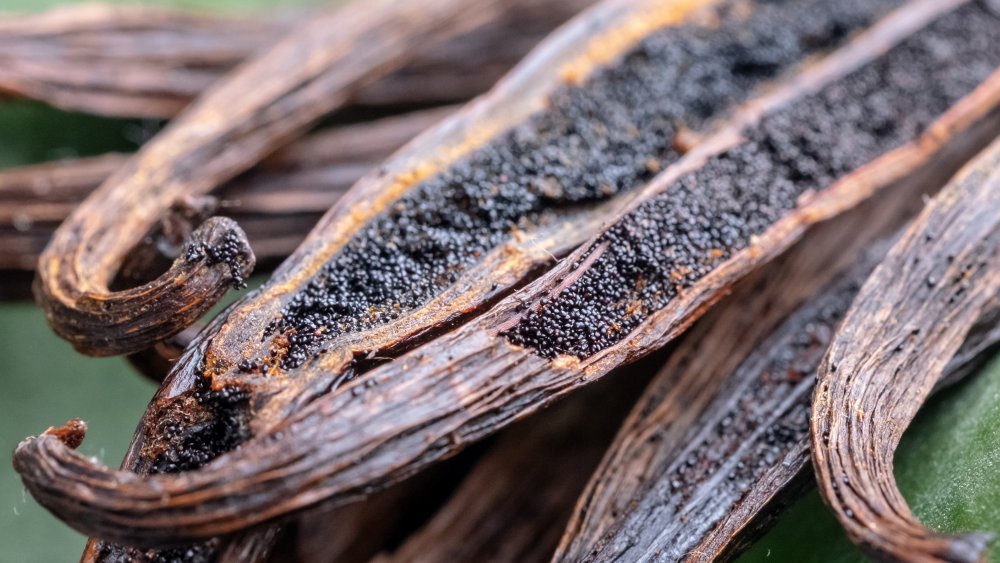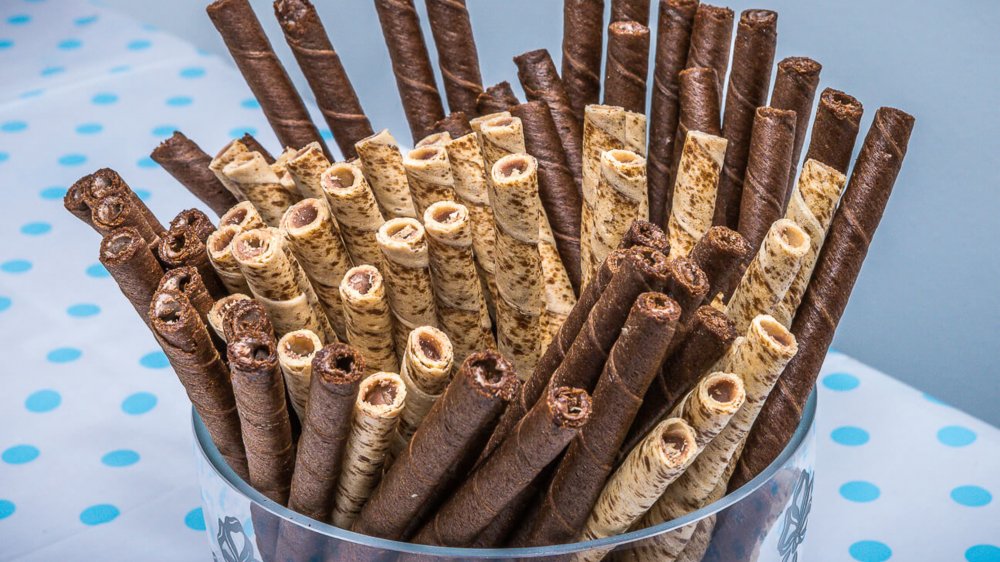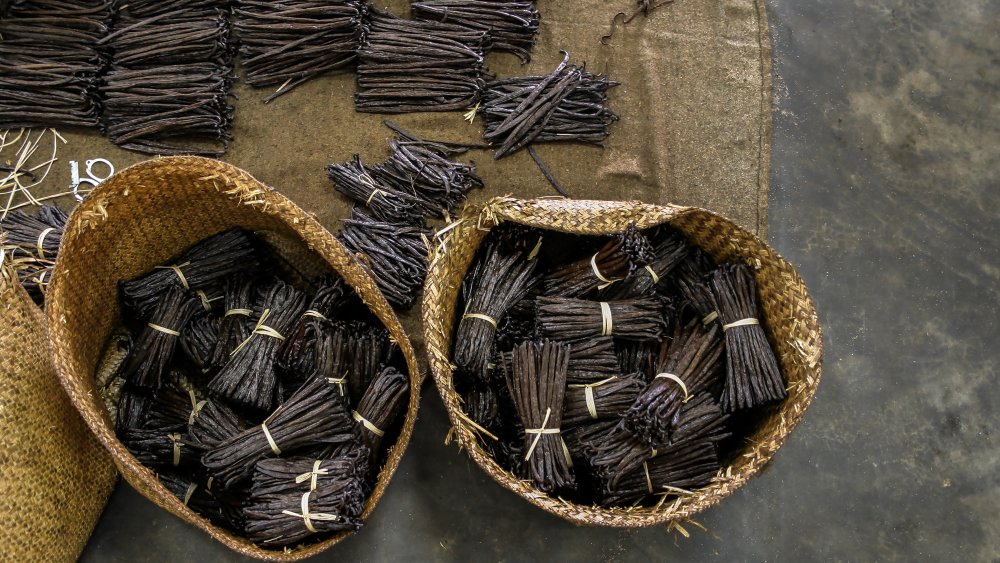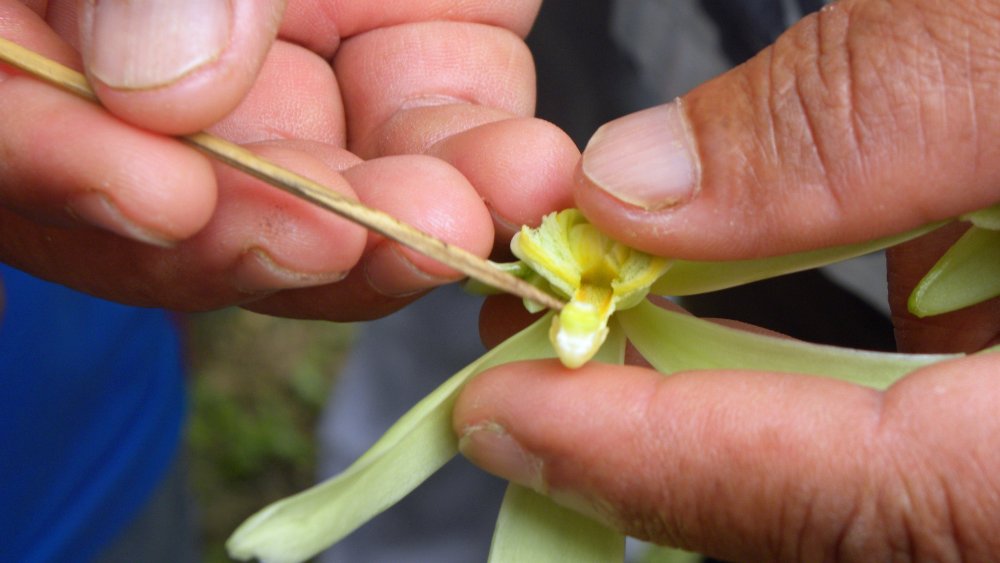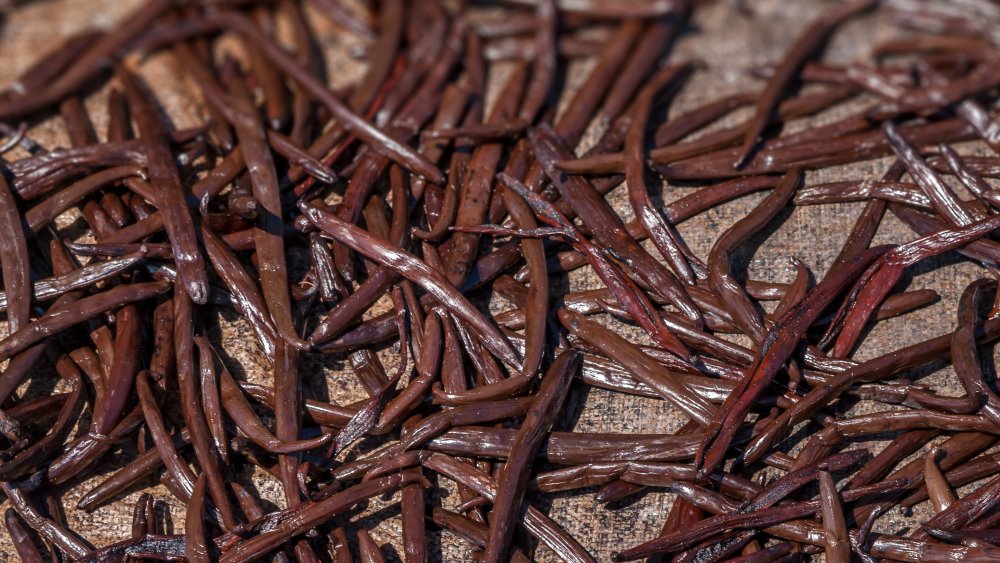Why Is Vanilla So Expensive?
It dresses up just about every dessert we know, from simple cookies to show-stopping cakes, and from pre-made puddings to complicated souffles. Historically, it may have been chocolate's sidekick, but vanilla has since come into its own, so much so that the International Ice Cream Association claimed vanilla as a first-choice flavor for 29 percent of people who eat ice cream; chocolate came in at 8.9 percent; while strawberry tied butter pecan at 5.3 percent (via National Geographic).
Vanilla is the second most expensive spice in the world today after saffron because it can only be found in specific parts of the world and it can only be pollinated in a specific way by hand — or by certain animal and insect species. The vanilla many of us use in a more affordable, liquid form is derived from soaking valuable vanilla beans in water and alcohol (via HuffPost), while actual vanilla pods can cost as much as $200 per pound (via Money Inc).
Vanilla began as chocolate's sidekick
Vanilla was not on the original shopping list that European traders had when they first left the old world in search of spices between the years 600 and 1200. They were only on the lookout for items like nutmeg, pepper, cloves, and cardamom, and these spices were important because these were needed to hide both unpleasant tastes and odors of bad food (via McCormick Science Institute).
Vanilla, which was originally found in Central America, made its way to Europe by way of the Spanish who had conquered Mexico. It wasn't prized for its own merits at first, but was consumed as an additive to chocolate until the early 17th century, when a cook named Hugh Morgan, who was working in the kitchens of Queen Elizabeth I, created all-vanilla flavored treats.
By the 18th century, the French were using vanilla in their ice creams. Thomas Jefferson, who was serving as American Minister to France, enjoyed that treat so much that he decided to take the recipe for vanilla ice cream back to the Americas where the flavor was first discovered — and you can find Jefferson's original recipe in the Library of Congress today.
How is vanilla cultivated today?
Vanilla is a member of the rather large orchid family, which encompasses about 25,000 different species. The vanilla orchid takes after its floral cousins, which have a reputation for being difficult to grow, and as a result, HuffPost says vanilla orchids can only be found in a very narrowly defined region — that is, 10 to 20 degrees north and south of the equator.
Most of today's vanilla is grown in Madagascar, Réunion, Mexico (where it was first discovered), and the Pacific island of Tahiti. The Vanilla Company says the aromatic flavoring is also grown in Indonesia, Papua New Guinea, Uganda, Kenya, India, Fiji, Central America, and even Hawaii.
Vanilla is pollinated by hand
If growing a vanilla orchid is tough, getting it to pollinate so it produces its prized pods is tougher. The cycle of cultivating vanilla begins with the birth of pale flowers along its crawling vine, which then bloom for just 24 hours.
To make things more challenging for its farmers, vanilla flowers can only pollinate with the help of a specific bee or hummingbird. If none are in the area, these fussy orchids need to be hand-pollinated with a stick and flick of a finger, so flowers can bear the vanilla pods that will be eventually be used to flavor the world's best-loved desserts (via The Vintage News).
If the flowers are not pollinated, National Geographic says they wilt, die, and drop to the ground. The hand-pollination technique, which was practiced by a Réunion slave named Edmond in the 1800s, is still, for the large part, being used today.
Global demand for vanilla is met by synthetic vanillin
If pollination is successful, farmers need to wait nine months for the pods to mature. And if all goes well, the world gets to enjoy an estimated 2000 metric tons of natural vanilla — which doesn't sound like much, particularly since vanilla is used for just about everything.
To make up for this shortfall, manufacturers use vanillin, which is a synthetic vanilla which National Geographic says can be made from petrochemicals, lignin (which is obtained from the pulp and paper industry), as well as a component of clove oil known as eugenol. Vanillin is much easier to source in great quantities — about 20,000 metric tons are manufactured and sold every year and costs a fraction of the real deal.
